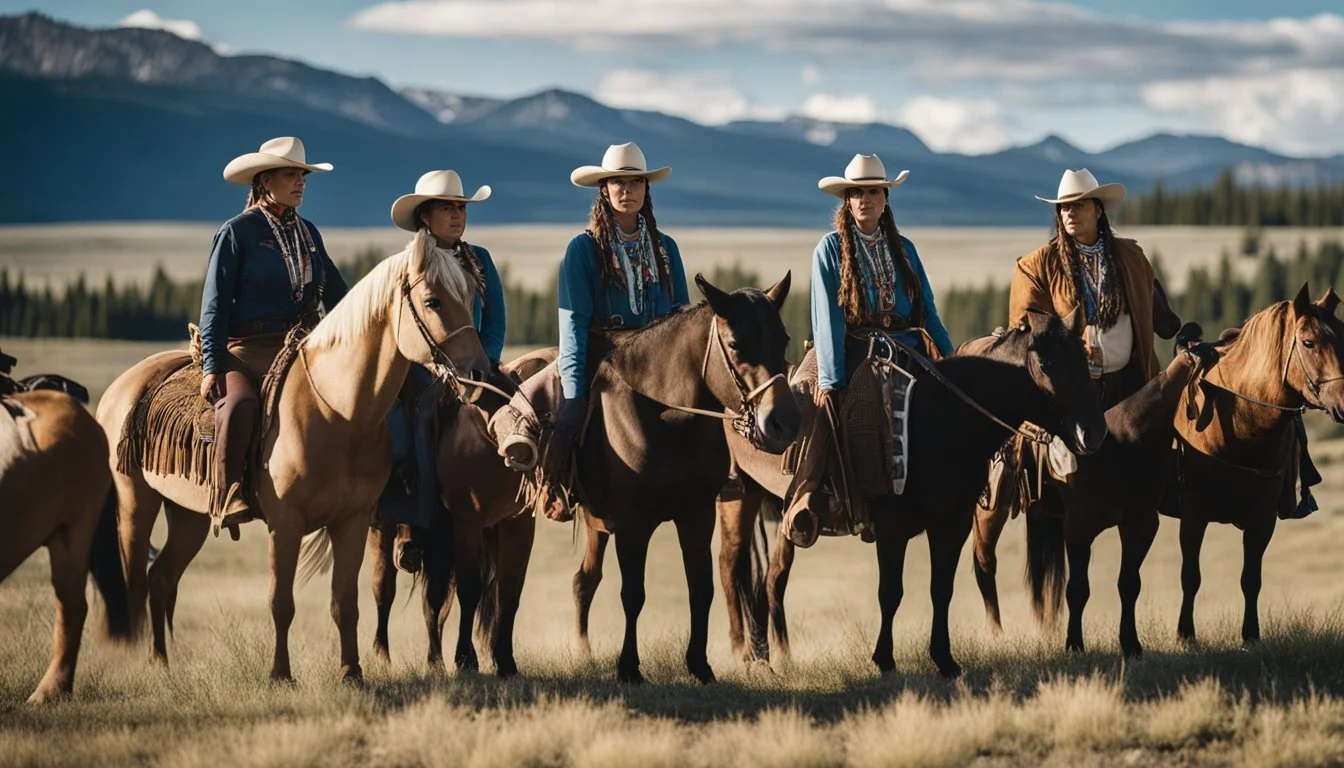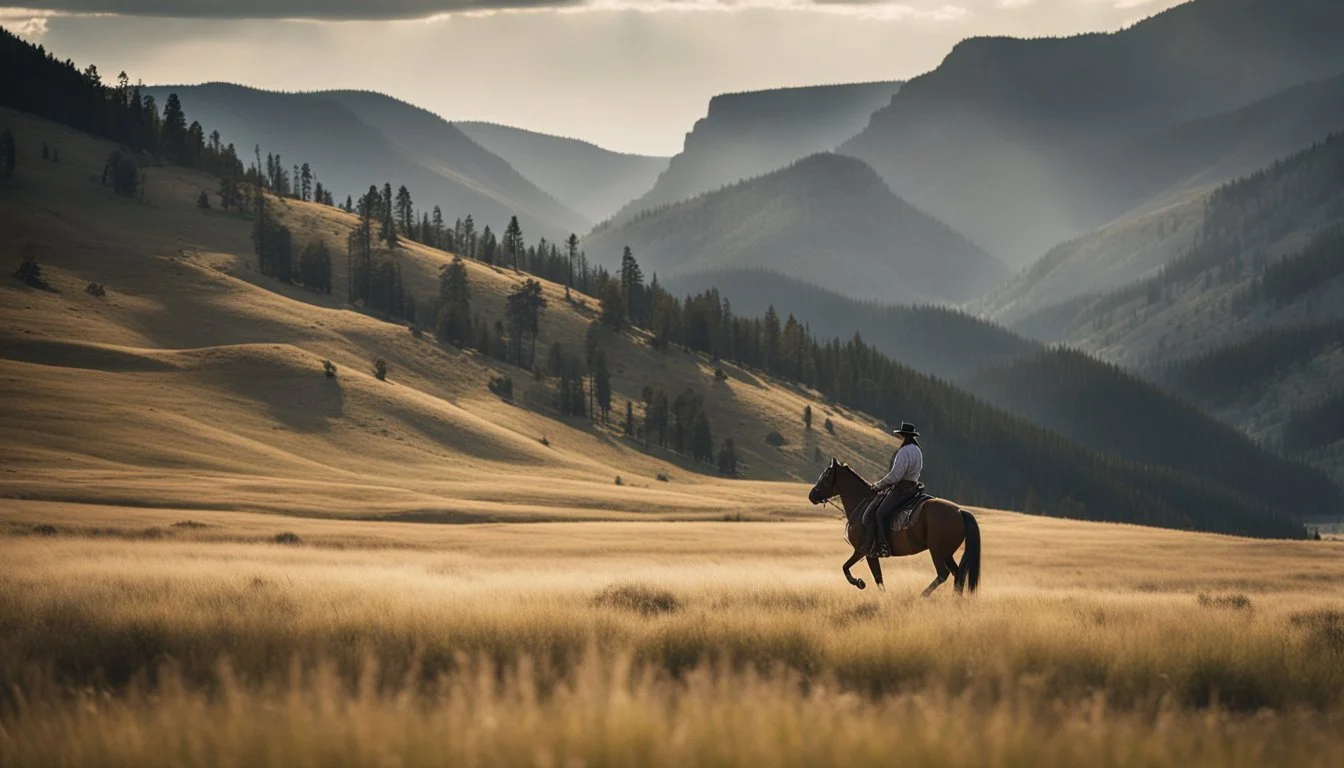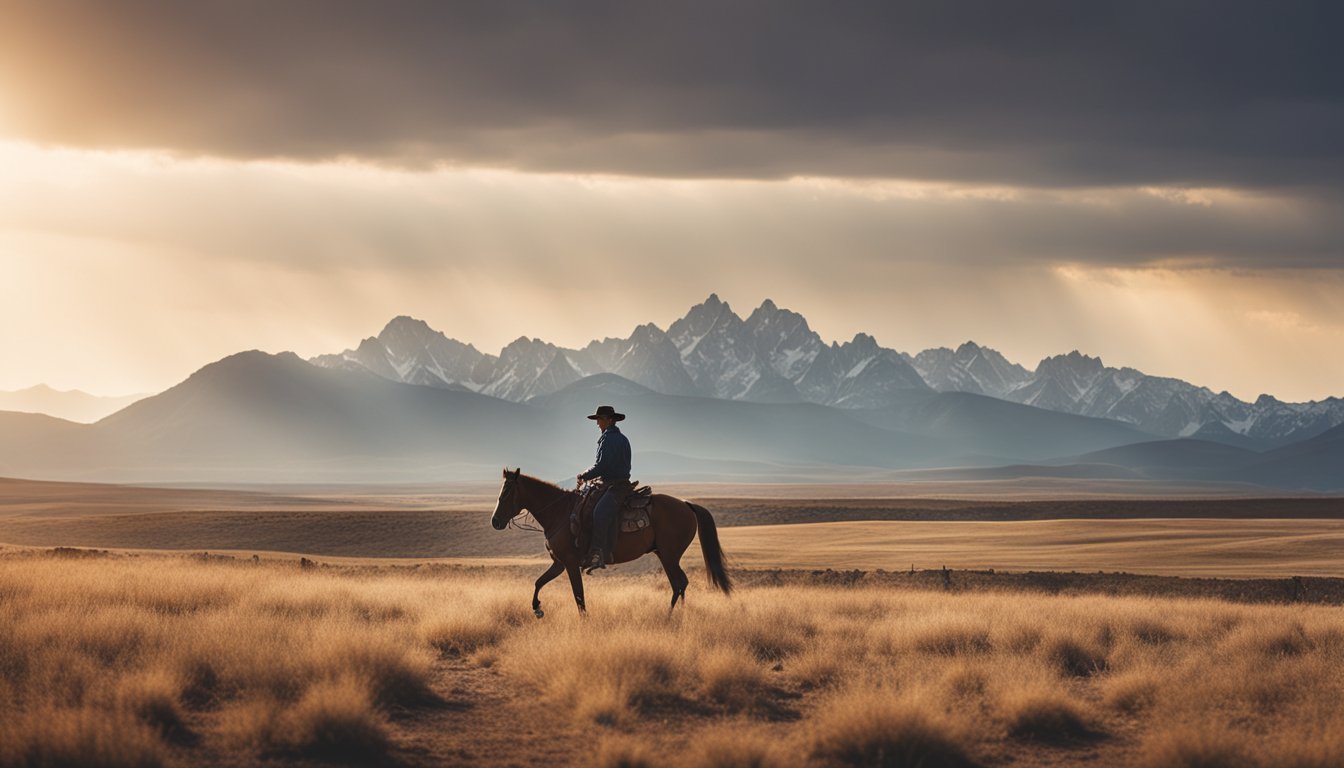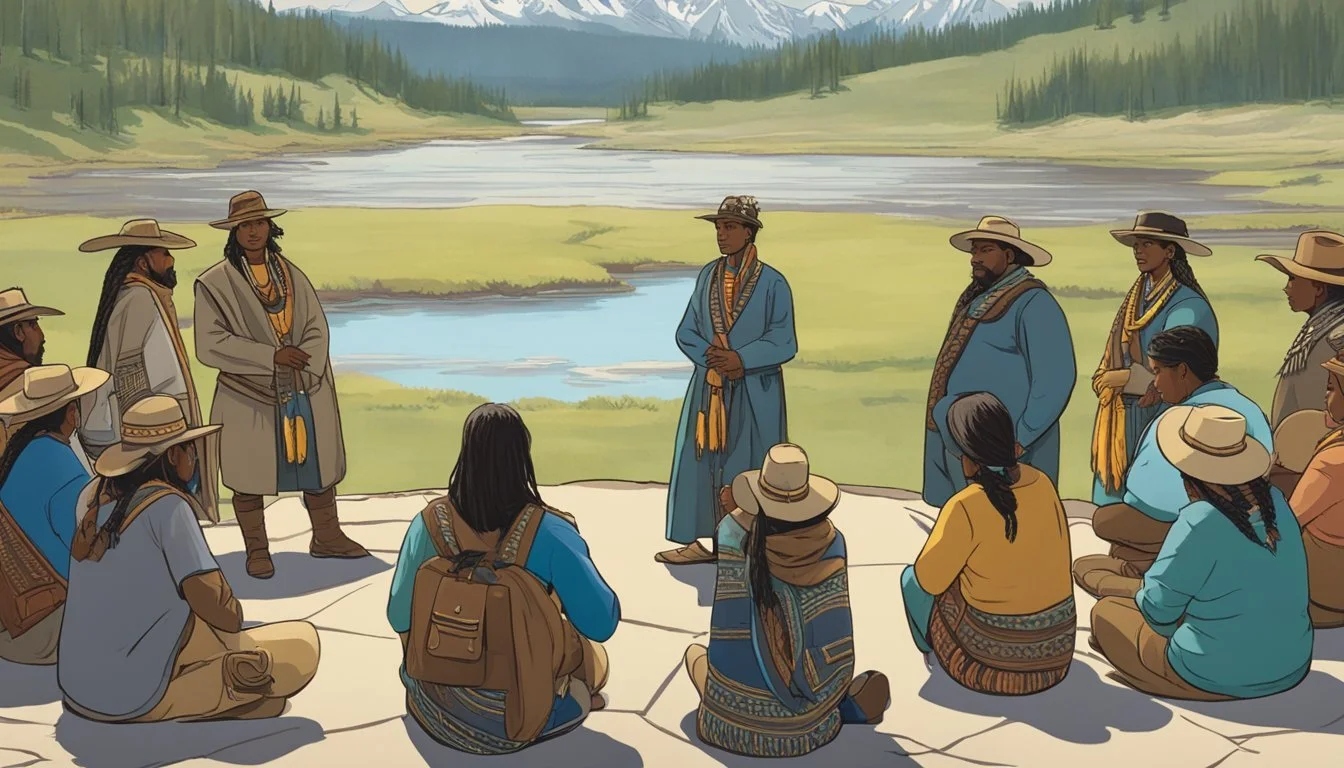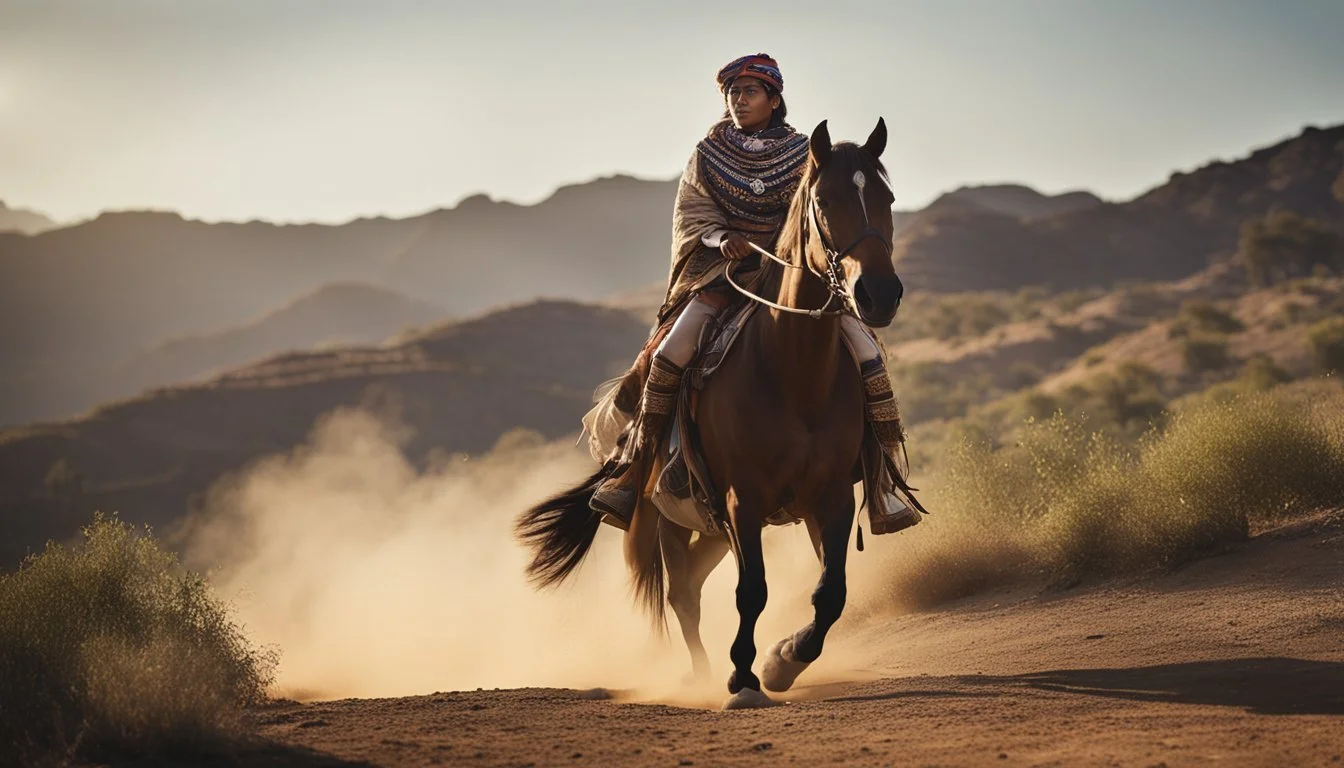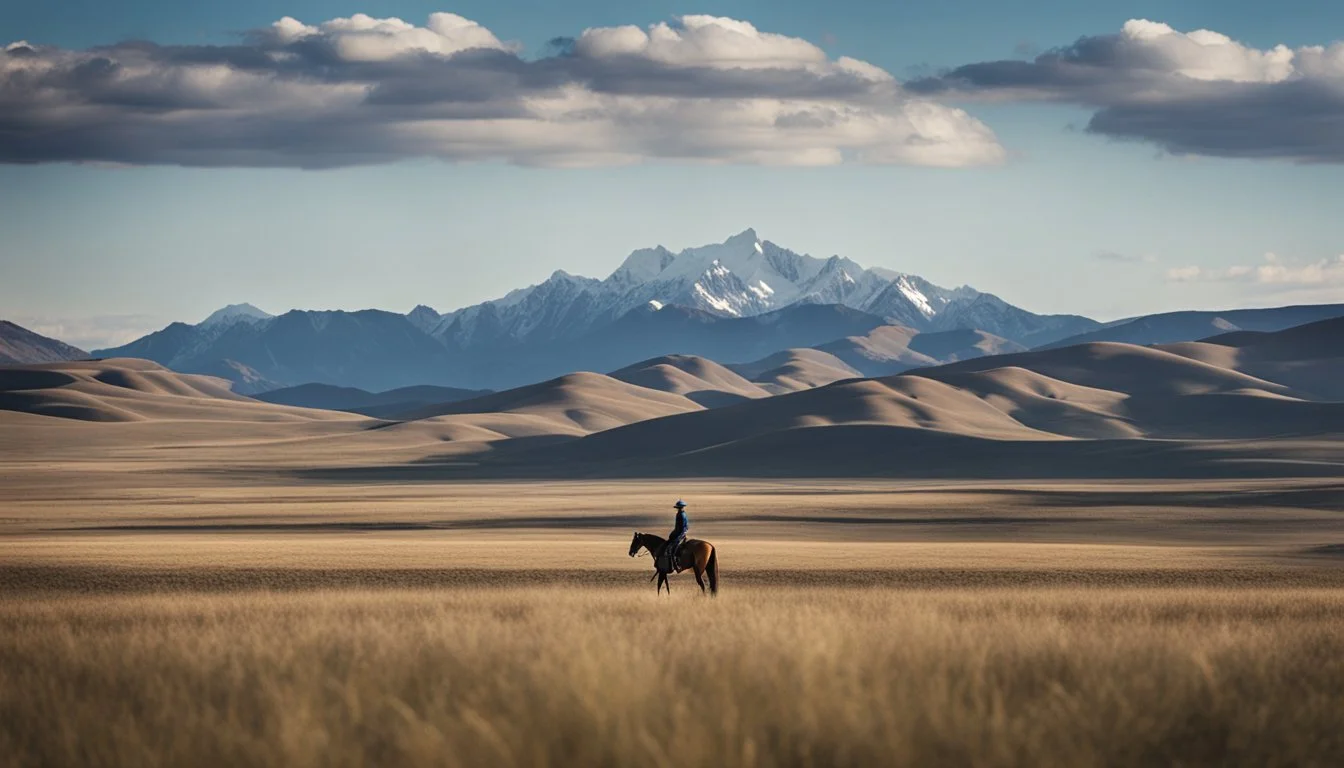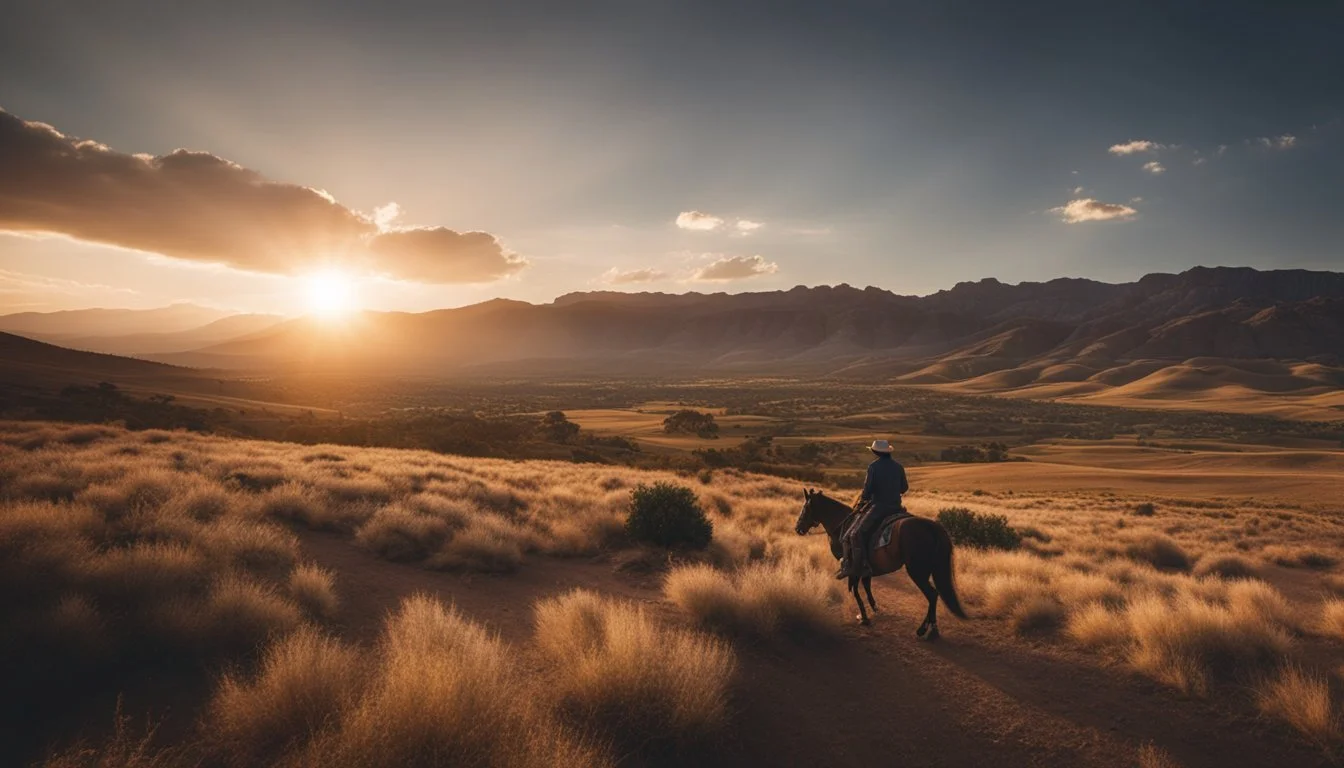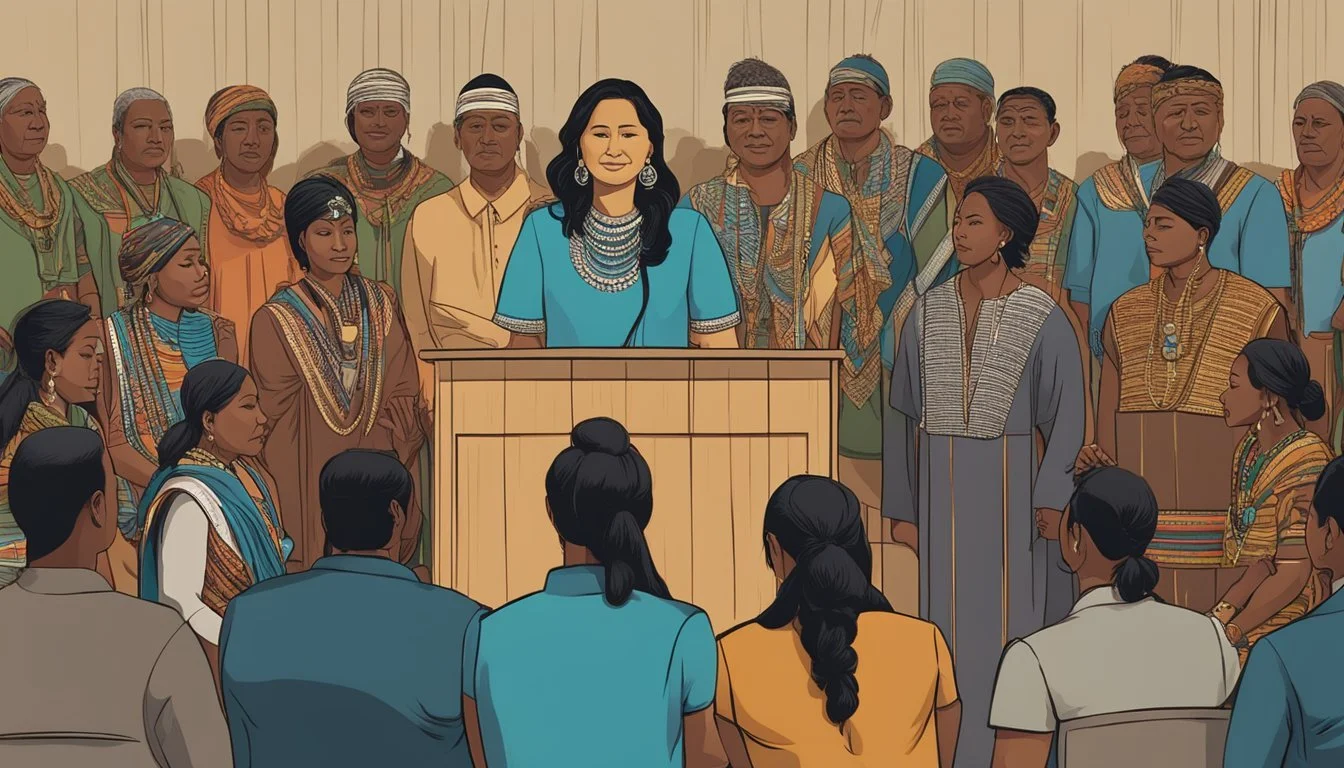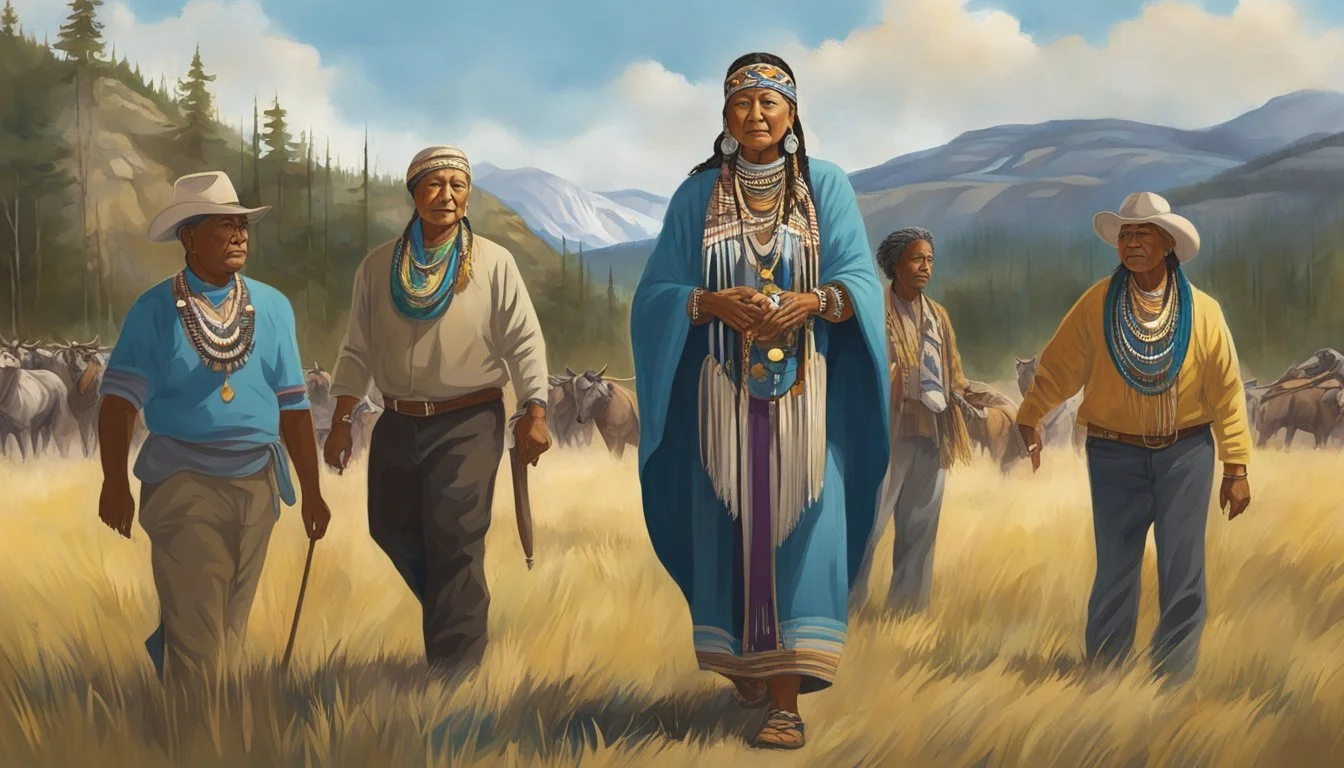Monica Dutton's Shocking Rise to Tribal Chairman Could Change Yellowstone Forever
Monica Dutton's journey in Yellowstone has captivated audiences, showcasing her struggle to balance her Native American heritage with her role in the Dutton family. As a bridge between two cultures, Monica has emerged as one of the show's most complex and relatable characters.
If Monica were to become the tribal chairman, it would dramatically shift the power dynamics within the Yellowstone universe. Her unique perspective and intimate knowledge of both worlds could potentially foster greater understanding and cooperation between the Broken Rock Reservation and the Dutton Ranch. This hypothetical scenario would place Monica at the forefront of tribal politics, challenging her to navigate the delicate balance between preserving Native American traditions and adapting to modern challenges.
Such a development would also provide a fascinating exploration of Monica's character growth. Portrayed by Kelsey Asbille, Monica has already demonstrated resilience and strength in the face of numerous hardships. Taking on the role of tribal chairman would further test her resolve and leadership abilities, potentially offering viewers a deeper look into Native American governance and its impact on the landscape of the American West depicted in the television series.
The Influence of Monica Dutton's Character
Monica Dutton, portrayed by Kelsey Asbille, stands as a pivotal figure in Yellowstone, bridging Native American culture with the Dutton family dynamics. Her character's impact extends beyond the show, influencing perceptions of indigenous representation in media.
Character Profile and Development
Monica Dutton emerges as a complex character in Yellowstone, balancing her roles as a wife, mother, and teacher. Her journey reflects the challenges faced by Native American women in modern society. As Kayce Dutton's wife, Monica navigates the intricate power dynamics of the Dutton family while maintaining her cultural identity.
Monica's character development showcases her resilience and determination. She faces numerous obstacles, including family conflicts and personal tragedies, which shape her into a stronger individual. Her growth throughout the series demonstrates the multifaceted nature of Native American experiences.
Cultural Identity and Representation
Monica's character serves as a critical link between the Dutton ranch and the Broken Rock Reservation. She embodies the struggle of maintaining indigenous heritage while adapting to contemporary life. Her presence on screen provides a nuanced portrayal of Native American identity, challenging stereotypes often seen in media.
As a teacher, Monica emphasizes the importance of education in preserving cultural traditions. She strives to instill pride in indigenous heritage among her students, highlighting the significance of cultural preservation. Monica's character offers viewers insight into the complexities of Native American life in modern America.
Monica's Impact on Indigenous Storytelling in Media
Monica Dutton's character has significantly influenced indigenous storytelling in television. By presenting a well-rounded Native American woman, Yellowstone contributes to more authentic representation in mainstream media. Monica's storylines address real issues faced by indigenous communities, bringing these narratives to a broader audience.
The success of Monica's character has paved the way for more diverse and nuanced portrayals of Native Americans in entertainment. Her presence in a popular series like Yellowstone has sparked conversations about indigenous representation and cultural sensitivity in media production.
Implications of Monica as Tribal Chairman
Monica's potential ascension to tribal chairman would mark a significant shift in leadership for the Broken Rock Indian Reservation. Her unique position as both a member of the tribe and part of the Dutton family could bring new perspectives and challenges.
Shift in Tribal Dynamics and Leadership
Monica's leadership style would likely differ from previous chairmen. Her background in education and experiences with the Dutton family could inform her approach to tribal governance.
She might prioritize educational initiatives and cultural preservation programs. This could lead to increased focus on language revitalization and traditional practices within the community.
Monica's youth and gender could also impact tribal dynamics. Some elders might resist change, while younger members may embrace her fresh perspective.
Prospects for the Broken Rock Reservation
Under Monica's leadership, the reservation could see renewed efforts to address key issues. Economic development might take center stage, with initiatives to attract businesses and create jobs.
Land rights could become a major focus. Monica might leverage her connections to negotiate for the return of ancestral lands or secure better agreements for resource management.
Healthcare and social services could see improvements. Monica's personal experiences might drive efforts to enhance medical facilities and support programs for families.
Potential Conflicts and Alliances
Monica's position as tribal chairman could strain her relationship with the Dutton family. Conflicts over land use and water rights might intensify, testing her loyalties.
Her role could create new alliances with neighboring tribes. Shared interests in protecting tribal sovereignty might lead to stronger inter-tribal cooperation.
Tensions with local and state governments could arise as Monica advocates for increased tribal autonomy. This might result in legal battles over jurisdiction and resource control.
Relations with federal agencies could evolve. Monica might push for stricter enforcement of treaty rights and increased federal support for reservation programs.
Political and Social Context
Monica's potential role as tribal chairman would intersect with complex political dynamics and historical legacies. Her leadership would navigate ongoing tensions between tribal sovereignty and federal policies.
Contemporary Indigenous Politics
Native American political representation has grown in recent years. More Indigenous candidates run for local, state, and national offices. Tribal governments deal with issues like economic development, healthcare, and environmental protection.
Leadership often balances traditional values with modern challenges. Tribal chairpersons must navigate relationships with federal and state governments. They advocate for their community's interests in areas like land rights and resource management.
Native women increasingly take on leadership roles in tribal politics. This shift reflects changing gender dynamics in many Indigenous communities.
Historical Context of Native American Leadership
American history includes many examples of influential Native leaders. Chiefs like Sitting Bull and Geronimo led resistance against U.S. expansion. Later leaders fought for civil rights and cultural preservation.
The Indian Reorganization Act of 1934 reshaped tribal governance. It encouraged tribes to adopt constitutions and elect councils. This shift impacted traditional leadership structures.
Historical injustices, like forced relocation and boarding schools, continue to influence tribal politics. Leaders often work to heal intergenerational trauma while moving their communities forward.
Tribal Sovereignty and U.S. Policies
Tribal sovereignty is a core principle of Native American governance. It recognizes tribes as distinct political entities with inherent rights. U.S. law defines tribes as "domestic dependent nations."
Federal policies have both supported and undermined tribal sovereignty. The Self-Determination and Education Assistance Act of 1975 increased tribal control over services. However, limits on jurisdiction and funding remain contentious issues.
Tribal leaders navigate complex legal frameworks. They must balance asserting sovereignty with maintaining government-to-government relationships. Land rights, natural resources, and gaming regulations are key areas of negotiation.
Cultural Significance and Challenges
Monica's potential role as tribal chairman would bring profound cultural implications and unique challenges. Her position would bridge traditional Native American values with modern leadership demands.
Promoting Native American Culture and Heritage
As chairman, Monica could prioritize preserving and celebrating Native American traditions. She might implement cultural education programs in schools, focusing on language revitalization and traditional practices. Monica could organize community events showcasing Native art, music, and dance.
She might work to protect sacred sites and advocate for the return of cultural artifacts. Her leadership could strengthen intergenerational connections, encouraging elders to share tribal histories with youth.
Addressing Stereotypes and Cultural Misconceptions
Monica's chairmanship would provide a platform to challenge stereotypes about Native Americans. She could use media appearances to educate the public about contemporary Indigenous issues and diversity among tribes.
Her role might involve collaborating with filmmakers and writers to ensure accurate portrayals of Native characters in entertainment. Monica could develop cultural sensitivity training for government officials and business leaders.
She might establish partnerships with universities to promote research on Native American history and contemporary experiences.
Educational Roles and Contributions
As chairman, Monica could spearhead educational initiatives within the tribe. She might create scholarship programs for Native students pursuing higher education. Monica could work to incorporate Indigenous knowledge into school curricula.
She might establish mentorship programs connecting Native professionals with students. Monica could advocate for increased funding for tribal schools and adult education programs.
Her leadership might focus on developing STEM programs tailored to tribal needs and environmental concerns. She could forge partnerships with colleges to create specialized degree programs in Native American studies and tribal governance.
Economic and Development Aspects
Monica's potential role as tribal chairman could significantly impact the reservation's economy and development. Her leadership would likely focus on balancing traditional values with modern economic opportunities, while addressing key challenges facing indigenous communities.
Fostering Economic Growth on the Reservation
Monica might prioritize attracting new businesses and industries to the reservation. This could include promoting tourism around the area's natural beauty and cultural heritage. She might work to develop partnerships with nearby towns and cities to create job opportunities for tribal members.
Improving infrastructure would be crucial. Monica could seek federal and state funding for road improvements, broadband internet access, and modernizing utilities. These upgrades would make the reservation more attractive for businesses and improve quality of life for residents.
Entrepreneurship programs could be established to support tribal members in starting their own businesses. This might involve microloans, business education classes, and mentorship opportunities.
Resource Management and Sustainability
Effective management of the reservation's natural resources would be a key focus. Monica might implement sustainable forestry practices to create jobs while preserving the land for future generations.
Water rights negotiations could become a priority. Securing and protecting the tribe's water resources would be vital for agriculture, wildlife, and potential energy projects.
Renewable energy initiatives might be explored. Solar and wind power projects could provide clean energy and create new revenue streams for the tribe.
Community Initiatives and Opportunities
Education would likely be a cornerstone of Monica's economic development strategy. She might work to improve schools on the reservation and create scholarship programs for higher education.
Job training programs could be expanded to equip tribal members with skills needed for emerging industries. This might include partnerships with local colleges or vocational schools.
Cultural tourism could be developed as an economic driver. Monica might support initiatives to showcase traditional arts, crafts, and customs, creating income opportunities while preserving cultural heritage.
Healthcare improvements could also contribute to economic growth. Expanding medical facilities and services on the reservation would create jobs and improve overall community well-being.
Narrative and Thematic Analysis of Yellowstone
Yellowstone weaves a complex tapestry of family legacy, power struggles, and cultural tensions against the backdrop of Montana's rugged landscape. The series explores themes of land ownership, indigenous rights, and the changing face of the American West.
Exploring the Dutton Family Saga
The Dutton family forms the core of Yellowstone's narrative. John Dutton, the patriarch, fiercely defends his vast ranch from various threats. His children - Jamie, Beth, and Kayce - each grapple with their roles within the family empire.
Family dynamics drive much of the show's conflict. Beth's sharp wit and ruthless business acumen contrast with Jamie's political ambitions and inner turmoil. Kayce straddles two worlds as he balances his Dutton heritage with his Native American wife's culture.
The ranch itself becomes a character, symbolizing the Duttons' power and the vanishing frontier. Land disputes and development pressures create tension with neighboring tribes and big businesses.
Analysis of Indigenous Characters in the Series
Yellowstone attempts to portray Native American characters with depth and authenticity. The fictional Broken Rock Reservation plays a significant role in the show's storylines.
Thomas Rainwater, the tribal chairman, emerges as a formidable opponent to John Dutton. His character challenges stereotypes by being a Harvard-educated businessman fighting for his people's interests.
Monica Dutton, Kayce's wife, provides a bridge between the Dutton and Native worlds. Her character faces conflicts of identity and loyalty as she navigates life on and off the reservation.
The show consults with tribal advisors to depict ceremonies and traditions accurately. However, some critics argue that certain portrayals still perpetuate stereotypes or oversimplify complex issues facing Native communities.
Yellowstone's Contribution to Neo-Western Genre
Yellowstone breathes new life into the Western genre, updating classic themes for a modern audience. The show blends traditional cowboy imagery with contemporary issues like corporate takeovers and political maneuvering.
The series explores the evolving nature of power in the West. While John Dutton embodies the old-school rancher archetype, characters like Beth represent a new breed of cutthroat business tactics.
Yellowstone's sweeping cinematography showcases Montana's natural beauty, serving as both a stunning backdrop and a reminder of what's at stake in the characters' conflicts.
The show tackles current topics such as land development, water rights, and tribal sovereignty, giving viewers a nuanced look at the complexities of the modern American West.
Dutton Family and Interpersonal Relationships
Monica's potential role as tribal chairman would significantly impact her relationships within the Dutton family. Her position at the intersection of two worlds creates complex dynamics and challenges.
Monica's Relationship with Kayce Dutton
Monica and Kayce Dutton's marriage is a central pillar of their connection to both the Broken Rock Reservation and the Yellowstone Ranch. Their relationship faces unique pressures due to their different backgrounds. Kayce's loyalty to his family often conflicts with Monica's ties to her Native American heritage.
The couple's bond is tested by external forces and internal struggles. They navigate cultural differences while raising their son, Tate, in a complex environment. Their love remains strong, but the potential for Monica to become tribal chairman could introduce new tensions.
Family Loyalty and Internal Conflicts
The Dutton family's fierce loyalty is a defining characteristic of their dynamics. John Dutton's unwavering commitment to preserving the ranch influences all family relationships. Beth Dutton's protective nature towards her father and brothers adds another layer of complexity.
Monica's position as an outsider-turned-insider creates friction. Her potential leadership role in the tribe could exacerbate existing tensions within the family. The Duttons may view her increased tribal involvement as a threat to their interests in Montana.
Family gatherings and decision-making processes would likely become more charged. Monica's divided loyalties could strain her relationships with other Dutton family members.
Comparative Dynamics Between Characters
Beth Dutton and Monica represent contrasting approaches to family and power. Beth's aggressive tactics and unwavering loyalty to the ranch differ sharply from Monica's more measured and culturally-rooted perspective. This contrast could intensify if Monica assumes a leadership position.
Kayce's relationship with his father, John, might face additional strain. His role as a bridge between the Duttons and the tribe through his marriage to Monica could become more challenging. The dynamic between Monica and John Dutton would likely shift, potentially becoming more adversarial or requiring careful diplomacy.
Tate's upbringing would be significantly influenced by these changing dynamics. His dual heritage and the potential elevation of his mother's tribal status could reshape his relationship with both sides of his family.
Personal Growth and Education
Monica Dutton's journey encompasses significant personal growth and educational achievements. Her experiences as a teacher and advocate for Native American education have shaped her development and impact on the reservation community.
Monica's Career as a Teacher
Monica began her career as a teacher at Heartsong Middle School on the Broken Rock Reservation. She demonstrated a passion for educating Native American youth and preserving cultural heritage. Her dedication to her students extended beyond academics, as she often served as a mentor and role model.
Monica's teaching methods incorporated traditional knowledge and modern educational practices. She emphasized the importance of cultural identity while preparing students for future opportunities. Her innovative approach gained recognition among colleagues and community members.
Educational Influence on the Reservation
Monica's impact on education extended beyond her classroom. She actively participated in curriculum development, focusing on integrating Native American studies into various subjects. Her efforts helped create a more culturally relevant learning experience for students.
She organized educational workshops for parents and community members, bridging the gap between school and home. These initiatives improved parental involvement in children's education and strengthened community ties to the school system.
Monica also advocated for increased funding and resources for reservation schools. Her efforts contributed to improved facilities and expanded educational programs.
Pathways for Youth and Future Generations
Monica's vision for education on the reservation focused on creating pathways for youth to pursue higher education and career opportunities. She established partnerships with Montana State University and other institutions to provide college preparation programs and scholarships for Native American students.
She developed mentorship programs connecting students with successful Native American professionals. These initiatives exposed youth to diverse career options and inspired them to set ambitious goals.
Monica's commitment to education and personal growth set an example for future generations. Her own pursuit of further education in Native American Studies at Montana State University demonstrated the importance of lifelong learning and cultural understanding.
Conclusion
Monica Dutton as tribal chairman could reshape Yellowstone's narrative. Her unique position bridging two worlds offers potential for meaningful change.
As chairman, Monica may prioritize indigenous issues and cultural heritage. Her leadership could amplify Native American voices and concerns within the show's framework.
Monica's role could enhance cultural representation on screen. Her character development may provide deeper insights into reservation life and challenges.
The future outlook for Yellowstone might shift with Monica at the helm. New storylines could emerge, exploring themes of reconciliation and cooperation between the Duttons and the tribe.
Monica's legacy as chairman could leave a lasting impact. Her actions may influence both fictional and real-world perceptions of Native American leadership and sovereignty.
This hypothetical scenario opens up intriguing possibilities for Yellowstone's plot. It presents opportunities to address complex issues while maintaining the show's dramatic appeal.

